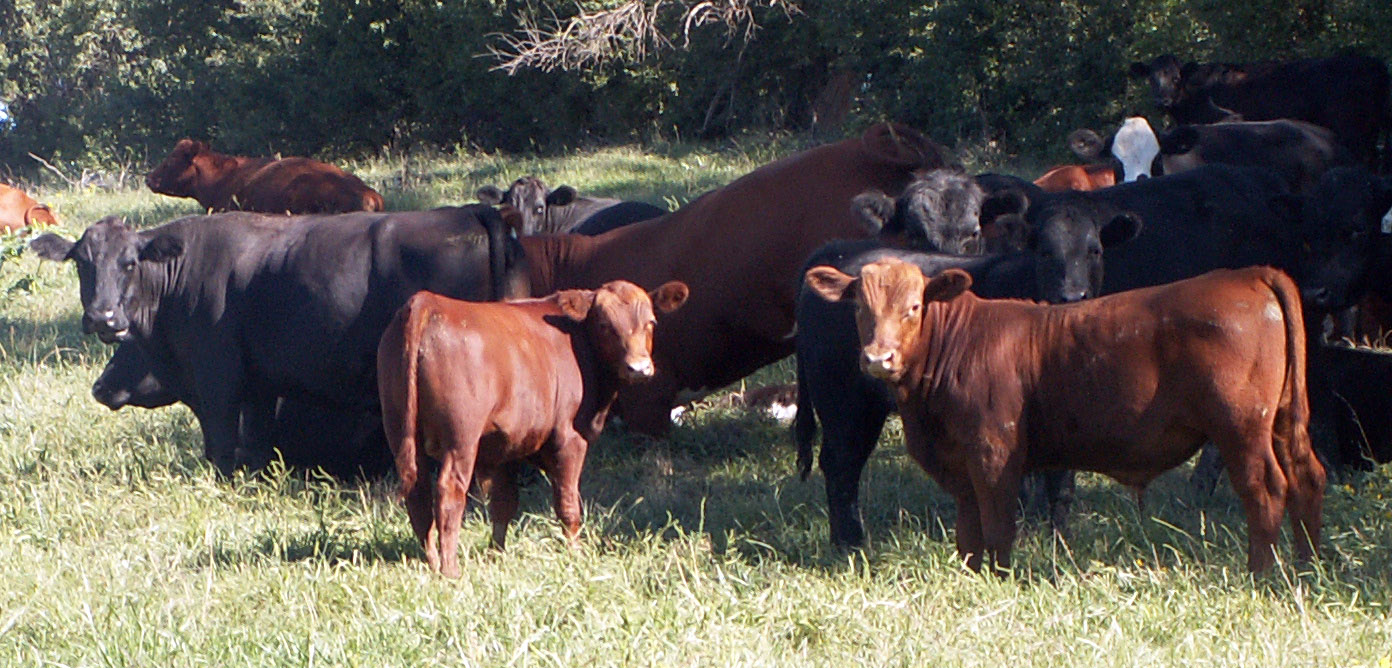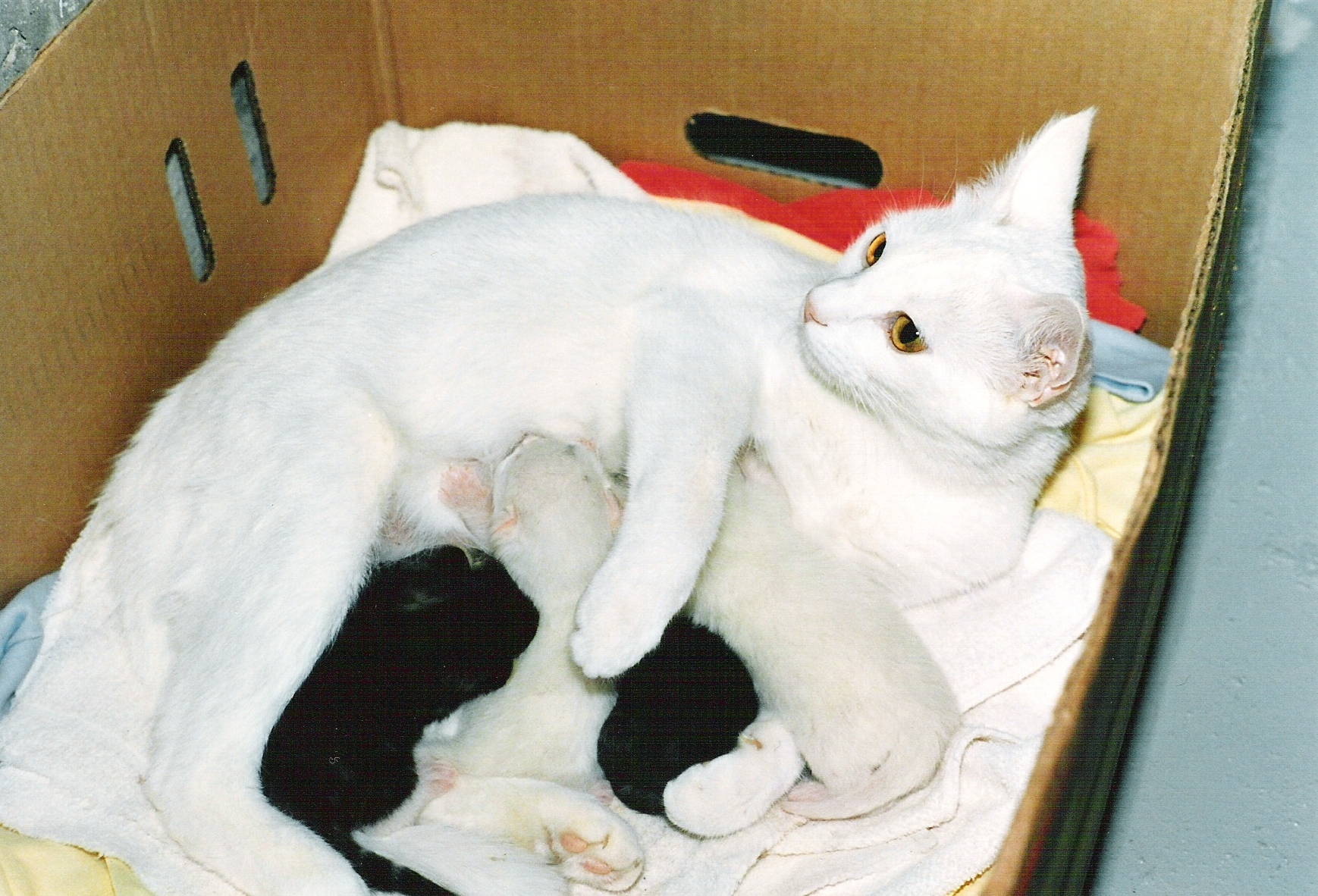|
Fjäll
The Fjäll ( or ) is a traditional Swedish breed of polled mountain cattle. It was threatened with extinction in the 1970s and 1980s, but recovered after a breed association was formed in 1995, partly thanks to stocks of frozen semen. Microsatellite analysis has shown it to be closely related to the endangered Bohuskulla breed. History There have long been small polled mountain cattle in Sweden. A text from 1296 AD describes cattle that are "small, hornless, white or whitish grey, often with dark spots". The Fjällras was established as a breed in the nineteenth century. A herd-book was started in 1907. The traditional mountain cattle breeds were very variable. In 1937 a new breed, the Swedish Polled ( or SKB) was created with the intention of merging the Fjällras with the Swedish Red Polled (), a quite different breed of mountain cattle. However, breeders did not accept the new classification, and continued to maintain separate bloodlines as before. During the 1970s an ... [...More Info...] [...Related Items...] OR: [Wikipedia] [Google] [Baidu] |
Swedish Polled
The Swedish Polled, , often abbreviated to SKB, is a Swedish breed of domestic cattle. It was created in 1937 from two different Swedish cattle breeds, the Swedish Red Polled and the Fjäll. Breeders did not accept the new classification, and continued to maintain separate bloodlines as before. Of the two constituent breeds, the Swedish Red Polled received official recognition in 2004, while the Fjäll has divided into two sub-breeds, the Fjällnära Boskap and the Svensk Fjällras. History The Swedish Polled was created in 1937 with the intention of merging the Swedish Red Polled () with the Fjällras, a quite different breed of mountain cattle. Breeders did not accept the new classification, and continued to maintain separate bloodlines as before. A breeders' association, the Sveriges Rödkulleförening, was formed for the Rödkulla in the 1960s, and a similar association, the Föreningen Svensk Fjällrasavel, was established for the Fjäll breed in 1996. In 2004 th ... [...More Info...] [...Related Items...] OR: [Wikipedia] [Google] [Baidu] |
Bohuskulla
The Bohuskulla is an endangered Swedish breed of hornless mountain cattle. It originates from the area of the plateau in northern Bohuslän and Dalsland, in western Sweden. It is a traditional domestic Swedish breed, and derives from a group of cattle discovered in the 1990s in Skepplanda, in Västergötland, close to the border with Bohuslän. Microsatellite analysis has shown it to be closely related to the Fjällko mountain cattle of Sweden. History The Bohuskulla is a traditional domestic Swedish breed. Microsatellite analysis has shown it to be closely related to the Fjällko mountain cattle of Sweden. It originates from the barren pasture land of the plateau in northern Bohuslän and Dalsland, in western Sweden. Many were exported to Norway in the late nineteenth and early twentieth centuries. In the 1990s a small population was identified in Skepplanda, in Västergötland, close to the border with Bohuslän; the cattle had been brought from the Kynnefjäll. A ... [...More Info...] [...Related Items...] OR: [Wikipedia] [Google] [Baidu] |
List Of Cattle Breeds
Over 1000 breeds of cattle are recognized worldwide, some of which adapted to the local climate, others which were bred by humans for specialized uses. Cattle breeds fall into two main types, which are regarded as either two closely related species, or two subspecies of one species. ''Bos indicus'' (or '' Bos taurus indicus'') cattle, commonly called zebu, are adapted to hot climates and originated in the tropical parts of the world such as India, Sub-saharan Africa, China, and Southeast Asia. ''Bos taurus'' (or '' Bos taurus taurus''), typically referred to as "taurine" cattle, are generally adapted to cooler climates and include almost all cattle breeds originating from Europe and northern Asia. In some parts of the world further species of cattle are found (both as wild and domesticated animals), and some of these are related so closely to taurine and indicus cattle that interspecies hybrids have been bred. Examples include the Dwarf Lulu cattle of the mountains of Nepal ... [...More Info...] [...Related Items...] OR: [Wikipedia] [Google] [Baidu] |
Swedish Red Polled
The Swedish Red Polled, , is a Swedish breed of domestic cattle. It is a dual-purpose breed, raised both for its milk and for its meat. History The Swedish Red Polled is a traditional Swedish breed. It was commonly raised in the landskap of Dalarna and along the west coast of the country. A herd-book was established in 1912, and the breed began to spread. By the late 1930s it was present not only in Dalarna but in Bohuslän, Dalsland, Gästrikland, Hälsingland, Närke, the Stockholm archipelago, Uppland, Värmland and Västmanland. There were about 30 000 head. In 1937 a new breed, the Swedish Polled ( or SKB), was created with the intention of merging the Rödkulla with the Fjällras, a quite different breed of mountain cattle. Breeders did not accept the new classification, and continued to maintain separate bloodlines as before. A breeders' association, the Sveriges Rödkulleförening, was formed in the 1960s. Nevertheless, the population declined steeply. By the lat ... [...More Info...] [...Related Items...] OR: [Wikipedia] [Google] [Baidu] |
Polled Livestock
Polled livestock are livestock without horns in species which are normally horned. The term refers to both breeds and strains that are naturally polled through selective breeding and also to naturally horned animals that have been disbudded. Natural polling occurs in cattle, yaks, water buffalo, and goats, and in these animals it affects both sexes equally; in sheep, by contrast, both sexes may be horned, both polled, or only the females polled. The history of breeding polled livestock starts about 6000 years BC. Terminology The archaic term or is sometimes used to refer to hornless livestock (especially cattle) in folk songs, folk tales, and poetry, and in the name of the polled Irish Moiled cattle breed. "Muley" derives from Irish and Scottish Gaelic ''maol'', and Welsh ''moel''. Genetics In cattle, the polled allele is genetically dominant to that for horns. The polled trait is far more common in beef breeds than in dairy breeds. CRISPR technology is being develope ... [...More Info...] [...Related Items...] OR: [Wikipedia] [Google] [Baidu] |
Effective Population
The effective population size (''N''''e'') is the size of an idealised population that would experience the same rate of genetic drift as the real population. Idealised populations are those following simple one- locus models that comply with assumptions of the neutral theory of molecular evolution. The effective population size is normally smaller than the census population size ''N'', partly because chance events prevent some individuals from breeding, and partly due to background selection and genetic hitchhiking. The same real population could have a different effective population size for different properties of interest, such as genetic drift (or more precisely, the speed of coalescence) over one generation vs. over many generations. Within a species, areas of the genome that have more genes and/or less genetic recombination tend to have lower effective population sizes, because of the effects of selection at linked sites. In a population with selection at many loci and a ... [...More Info...] [...Related Items...] OR: [Wikipedia] [Google] [Baidu] |
Protein
Proteins are large biomolecules and macromolecules that comprise one or more long chains of amino acid residue (biochemistry), residues. Proteins perform a vast array of functions within organisms, including Enzyme catalysis, catalysing metabolic reactions, DNA replication, Cell signaling, responding to stimuli, providing Cytoskeleton, structure to cells and Fibrous protein, organisms, and Intracellular transport, transporting molecules from one location to another. Proteins differ from one another primarily in their sequence of amino acids, which is dictated by the Nucleic acid sequence, nucleotide sequence of their genes, and which usually results in protein folding into a specific Protein structure, 3D structure that determines its activity. A linear chain of amino acid residues is called a polypeptide. A protein contains at least one long polypeptide. Short polypeptides, containing less than 20–30 residues, are rarely considered to be proteins and are commonly called pep ... [...More Info...] [...Related Items...] OR: [Wikipedia] [Google] [Baidu] |
Butter-fat
Butterfat or milkfat is the fatty portion of milk. Milk and cream are often sold according to the amount of butterfat they contain. Composition Butterfat is mainly composed of triglycerides. Each triglyceride contains three fatty acids. Butterfat triglycerides contain the following amounts of fatty acids (by mass fraction):The quote values vary by 1–3% according to the source: Butterfat contains about 3% trans fat, which is slightly less than 0.5 grams per US tablespoon. Trans fats occur naturally in meat and milk from ruminants. The predominant kind of trans fat found in milk is vaccenic fatty acid. Trans fats may be also found in some industrially produced foods, such as shortenings obtained by hydrogenation of vegetable oils. In light of recognized scientific evidence, nutritional authorities consider all trans fats equally harmful for health and recommend that their consumption be reduced to trace amounts. However, two Canadian studies have shown that vaccenic acid ... [...More Info...] [...Related Items...] OR: [Wikipedia] [Google] [Baidu] |
Lactation
Lactation describes the secretion of milk from the mammary glands and the period of time that a mother lactates to feed her young. The process naturally occurs with all sexually mature female mammals, although it may predate mammals. The process of feeding milk in all female creatures is called ''nursing'', and in humans it is also called ''breastfeeding''. Newborn infants often produce some milk from their own breast tissue, known colloquially as witch's milk. In most species, lactation is a sign that the female has been pregnant at some point in her life, although in humans and goats, it can happen without pregnancy. Nearly every species of mammal has teats; except for monotremes, egg-laying mammals, which instead release milk through ducts in the abdomen. In only a handful of species of mammals, certain bat species, is milk production a normal Male lactation, male function. ''Galactopoiesis'' is the maintenance of milk production. This stage requires prolactin. Oxytocin is cr ... [...More Info...] [...Related Items...] OR: [Wikipedia] [Google] [Baidu] |
Finching (cattle)
Finching is a colour pattern of cattle occurring in many unrelated breeds. It consists of a white or pale stripe along the spine. It may join to a white head, as in Hereford cattle, continue over the tail, as in Gloucester cattle, Gloucester and Pinzgau Cattle, Pinzgau cattle, or it may form part of another colour-sided pattern, for example in Randall Lineback, English Longhorn, Texas Longhorn (cattle), Texas Longhorn, Speckle Park and Irish Moiled cattle. In some breeds, such as Jersey (cattle), Jersey and Heck (cattle), Heck cattle, finching occurs mainly in bulls, forming a cream or white stripe along the spine of a black-brown animal. Cattle with finching are said to be ''finched'' or ''finch-backed''.''Oxford English Dictionary'' Compact Edition 1971: Finch-backed (adjective); Finched (participle adjective) References Cattle {{cattle-stub ... [...More Info...] [...Related Items...] OR: [Wikipedia] [Google] [Baidu] |
Colour-sided
Colour-sided is a colour pattern of domesticated cattle. It is sometimes called lineback. Characteristics The pattern consists of a dark body colour, with white finching along the spine, white under the belly, and often white also over the tail, head and legs. The ears, nose and feet are generally dark. The dark colour may be any solid colour such as black, red or brindle. The pattern may occur in many breeds, but some breeds are consistently colour-sided; these include the English Longhorn, and the Irish Moiled in the British Isles, and the Randall Lineback in the United States. Among other breeds that frequently display the pattern are the Texas Longhorn, the Florida Cracker and some African and Scandinavian breeds; it is also seen in the Belgian Blue, where it is called 'Witrik'. A similar colour pattern is seen in the domestic yak and in some zebuine cattle. An extreme pale form of the colour-sided pattern is the colour-pointed or 'white park' pattern, seen for exampl ... [...More Info...] [...Related Items...] OR: [Wikipedia] [Google] [Baidu] |




